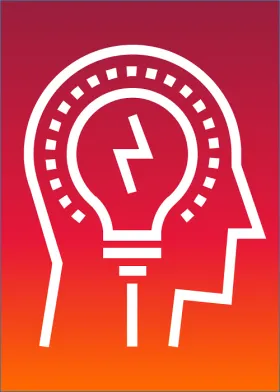Being a good leader is hard; being a bad leader is expensive.
The more organizations look to agile and lean practices to help them accelerate value delivery, the more they need good leaders to work with a lean and agile mindset to clear the way for the team to accomplish astonishing results. Unfortunately, this is not a simple task.
What is an agile mindset?
Agile was born out of frustration with the failures of the waterfall methodology and, more specifically, its lack of suitability for software development. Agile is a Software development methodology that focuses on the four values and 12 principles outlined in the Agile Manifesto. An agile mindset is flexible and prioritizes the following:
- Individuals and interactions over process and tools
- Working solutions over comprehensive documentation
- Customer collaboration over contract negotiation
- Responding to change over following a plan
What is a lean mindset?
The Lean mindset started in manufacturing and moved into Agile software development to address scaling issues with agility and to incorporate the entire SDLC process from intake to operations. Lean thinking focuses on improving how people, resources, effort, and energy are utilized to create value for your customer. Lean thinking focuses minimizing waste and allowing room for change by setting realistic expectations and attempting to over perform instead of under deliver. The lean methodology is defined by the following principles:
- Sustainable Delivery of Value
- Respect for Workers
- Flow
- Innovation
- Relentless Improvement
- Leadership that applies lean thinking
Why should my company consider adopting an agile and lean mindset?
Most of today’s IT leaders applied traditional software and product development approaches that helped them to grow their careers and ascend to more senior technology roles. However, these conventional approaches no longer serve today’s complex and fast-paced markets.
In traditional development, the cycle time from an excellent idea to software completion is so long and complicated that it’s hard to realize where the real problems lie. When agile concepts are applied in an organization, the pain of a flawed system and culture or improper management is apparent way more often.
Agile leadership methods offer a remedy for problems that arise from bad management
An agile method that can solve this management issue would be to prescribe small, self-managing teams where leaders mainly support and facilitate. Lean methods view leadership as the foundation of a well-functioning team and subscribe to the theory that only management can change the system.
This can seem conflicting and confusing―especially when this is all new. However, don’t confuse empowered, self-managing teams with good management. These two things go hand in glove.
What are the barriers to adopting an agile, lean mindset?
As a leader and manager caught in the middle of the old ways and new approaches, it’s not always self-evident what to do or how to do it. The State of Agile report from Digital.ai cites that three of the top challenges to agile adoption are:
- Organizational culture
- Resistance to change
- Lack of skills and experience with agile
For a culture to emerge that supports delivering astonishing results, leaders must be role models—modeling the very habits and behaviors aligned with the Agile Manifesto. A leader must be engaged and know what to do.
3 steps leaders can take to implement a lean and agile mindset
- Embrace new habits
- Create a supportive environment
- Build safety and trust
1. Recognize that you will need to learn new habits while implementing a lean, agile mindset
If you want different results, you have to do things differently. Recognize that you’ll need help learning new ways of doing things. Get help from a coach or an experienced business consultant if you can, and look to other colleagues for feedback. Openly seeking feedback on your behavior and ensuring that it supports the new culture is vital.
3 questions to ask your peers, direct reports, and their direct reports:
- Are you creating a culture that safely allows for experimentation as a leader?
- Have you trained and empowered your middle managers to help their team members organize?
- Have you motivated your team to manage others in motivating ways?
2. Create an environment that supports this new, agile way of working
How leaders create a system, or an environment that works is just as important as the system that leadership creates. Applying transparency, listening to the people in the organization, making strategic but small changes, preserving options, and making sure that there’s a feedback mechanism in place are key.
Once this supportive environment is established, make sure also to use it yourself. Leaders establish, operationalize, and sustain values, vision, and the environment by which their organizations thrive.
7 steps to begin creating your agile system:
- Focus on outcomes and impacts
- Be intentional
- Take just enough time to prepare your path of transformation
- Start with an agile core team that will guide, coach, monitor, respond to, and sustain the vision
- Make the change that you seek visible, and assess it by asking the people in the system what needs to be done to make that vision a reality
- Work the backlog in short and fast cycles that deliver value to the organization and gather feedback to guide the next steps
- Keep track of the impediments that the teams raise and remove them as quickly as possible
3. Build safety and trust within your team to create a lean, agile mindset.
Change is everywhere: the market, our clients, and technology, to name a few. The people we surround ourselves with and how we work together are the most important aspects of changing and innovating for a better tomorrow.
Transparency, vision, and giving others the freedom to work in a way that fosters innovation is an excellent start to creating your company’s agile and lean mindset. Caring about the people you’ve hired, creating a space where learning is desired, and organizing around values and a vision that unifies and motivates goes even further.
Leaders must know what motivates workers and align their values and the system to them. Teach and coach your leaders the skills they need to support this lean and agile environment.
Dr. W. Edwards Deming, the father of the agile system, once said, “Everyone is already doing their best. The problems are with the system … only management can change the system.” If you want something different, do something different.





